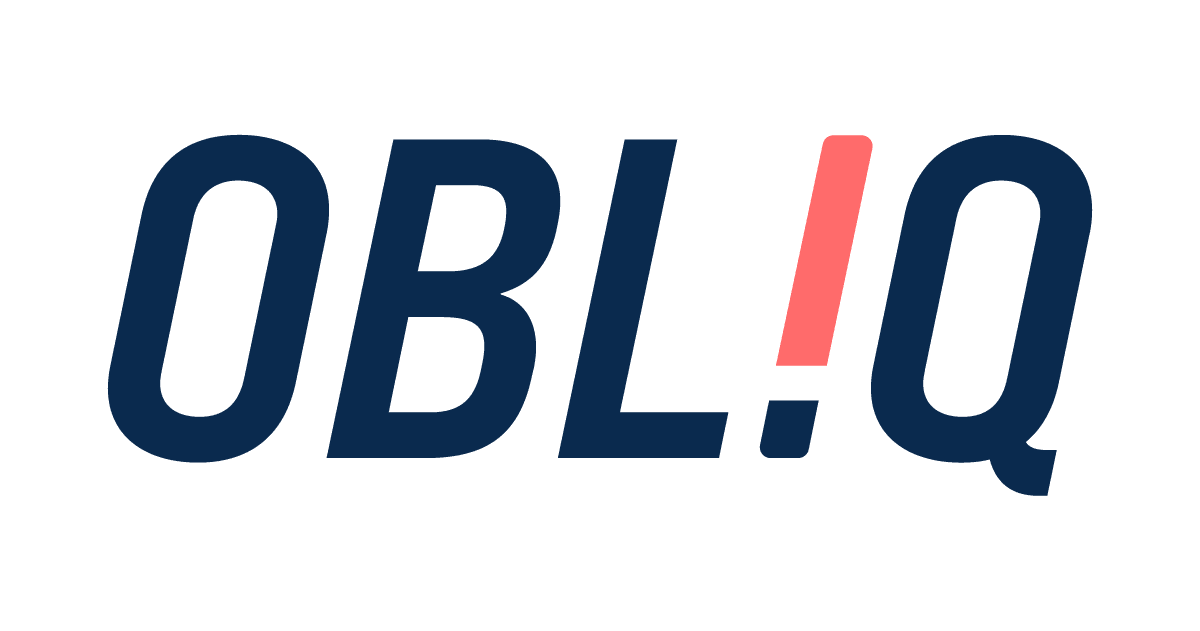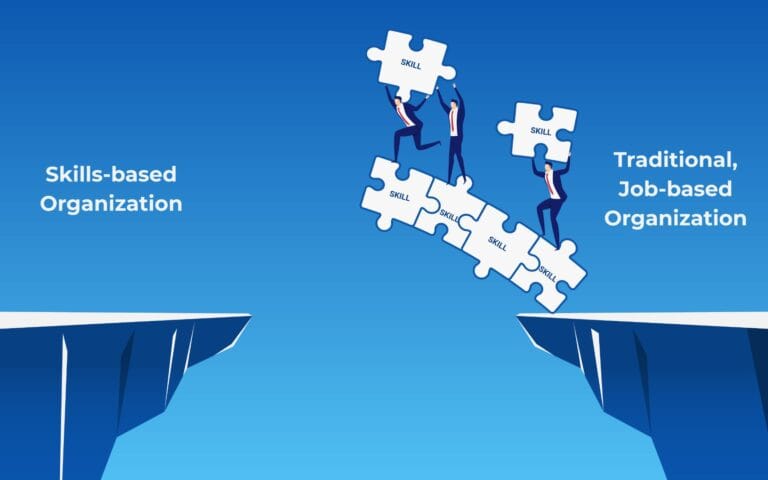For decades, Learning and Development (L&D) has faced an “accountability gap.” We’ve dutifully tracked course completion rates, learner satisfaction scores, and hours of training delivered. While these metrics show activity, they fail to answer the C-suite’s most pressing question: What was the business impact?
Leaders aren’t asking about how many people completed a course; they’re asking how that investment improved sales, reduced safety incidents, or accelerated innovation. This disconnect has often left L&D looking like a cost center, not the strategic value driver it can and should be. In fact, a 2024 Workforce Trends Report indicated that half of HR leaders struggle to showcase the return on investment (ROI) of their initiatives, and 60% find it difficult to build compelling business cases for their programs.
The time for reactive, backward-looking reports is over. The future of L&D is predictive. By harnessing the power of data, L&D can shift from justifying past spending to forecasting future needs, proactively shaping the workforce, and making smarter, forward-looking investments. It’s time to move from simply reporting on what happened to strategically predicting what comes next.
The Predictive L&D
Value Chain
Level 1: Foundational Data Sources
HRIS Data
LMS/LXP Records
Performance Reviews
Engagement Surveys
Level 2: The Predictive Core
Algorithms & Models
The engine that transforms data into forecasts.
Level 3: Actionable Insights
Future Skill Gap Forecasts
Identifies critical skills needed in 12-24 months.
Personalized Learning Paths
Recommends specific training for individual employees.
Employee Flight Risk Alerts
Flags high-potential talent at risk of attrition.
Level 4: Strategic Business Outcomes
Increased ROI on L&D Spend
Improved Employee Retention
Enhanced Organizational Agility
What is Predictive L&D Analytics?
Predictive L&D analytics is the practice of using historical and current data to forecast future trends, behaviors, and business outcomes. It’s the application of advanced techniques—from statistical modeling to machine learning—to answer the question, “What is likely to happen?”.
This represents a fundamental shift from traditional L&D metrics, which are inherently reactive.
- Traditional (Reactive) Analytics: Tells you what happened. It focuses on descriptive metrics like completion rates and satisfaction scores. It answers questions about the past.
- Predictive (Proactive) Analytics: Tells you what is likely to happen. It forecasts future skill gaps, identifies high-potential talent, and predicts the potential impact of training. It answers questions about the future.
This isn’t just about new software; it’s about a new mindset. It’s about L&D evolving from a service provider into a strategic partner that anticipates challenges and co-creates solutions with the business.
Why Now? The Urgency and Opportunity
The shift to predictive analytics isn’t just an option; it’s an urgent imperative fueled by a perfect storm of capability and necessity.
- Technological Maturity: The rise of AI, accessible cloud computing, and powerful machine learning algorithms has democratized predictive capabilities that were once the exclusive domain of data scientists.
- Data Abundance: Organizations now collect vast amounts of data from Learning Management Systems (LMS), HR Information Systems (HRIS), and engagement platforms, creating a rich foundation for analysis.
- The Widening Skills Gap: McKinsey & Company projects that by 2030, nearly 12 million workers in the US may need to switch occupations, driven by automation and AI. Proactive reskilling is no longer a choice but a survival strategy.
- The L&D Revolution: Industry analyst Josh Bersin has called for an "L&D Revolution," urging a move away from the traditional course-publishing model toward dynamic, AI-enabled learning experiences. Yet, his research shows that only 7% of L&D leaders feel expert in AI tools, highlighting a critical capability gap that must be closed.
This convergence of factors creates a clear mandate for leaders: embrace predictive analytics or risk falling behind in the race for talent and strategic agility.
The Business Case: How Predictive Analytics Drives Real Value
Adopting a predictive approach allows L&D to become a powerful lever for achieving critical business objectives. The value goes far beyond justifying a budget; it’s about optimizing your most valuable asset: your people.
How Predictive Analytics
Drives Real Value
Forecast & Close Future Skill Gaps
Identify & Develop High-Potential Talent
Personalize Learning for Maximum Impact
Optimize L&D Investment & ROI
Improve Retention & Engagement
1. Forecast and Close Future Skill Gaps
In a rapidly changing world, you can’t afford to be reactive to skill needs. Predictive analytics allows you to get ahead of the curve by analyzing industry trends, strategic business plans, and internal competency data to identify emerging skill needs, proactively develop learning pathways, and align talent development with long-term strategic goals.
2. Identify and Develop High-Potential Talent
Your next generation of leaders may already be in your organization, and predictive analytics can find them. By analyzing patterns in performance data, learning agility, and career aspirations, you can systematically pinpoint individuals who are ready for more. This enables data-driven career pathing, allowing you to recommend relevant upskilling opportunities that align training with individual career goals and build a robust leadership pipeline.
3. Personalize Learning for Maximum Impact
One-size-fits-all training is inefficient and often ineffective. Predictive analytics powers true personalization at scale. Microsoft, for example, uses predictive analytics to personalize learning for its leaders, examining data to discern what each person needs to learn to achieve their goals. This tailored approach boosts engagement, improves knowledge retention, and accelerates skill acquisition.
4. Optimize L&D Investment and Demonstrate Clear ROI
Predictive analytics provides the evidence to allocate resources intelligently. By linking learning data to business outcomes, you can identify which programs deliver the highest impact. Consider these real-world examples:
The ROI Proof Points
Connecting L&D initiatives to measurable business impact.
Best Buy
+$100,000
in annual operating income per store from a mere 0.1% increase in employee engagement.
FMCG Retailer
400% ROI
demonstrated in the first year of a training program by using people analytics to measure effectiveness.
When you can draw a straight line from a learning initiative to revenue growth, cost reduction, or improved productivity, L&D is no longer a cost center. It becomes a strategic investment hub. Building this kind of organization often starts with a strategic readiness assessment to understand your data capabilities.
5. Improve Employee Retention and Engagement
The cost of employee turnover is enormous, ranging from 50% to 200% of an employee’s annual salary. Predictive models can identify employees at risk of leaving before they even start looking. By analyzing patterns in engagement data and other factors, IBM developed a predictive model with 95% accuracy in forecasting employee turnover. This foresight allows HR and L&D to deploy targeted interventions, dramatically improving retention.
A Leader's Roadmap to Getting Started
Transitioning to a predictive model is a journey, not a flip of a switch. Here is a practical guide for leaders ready to begin.
Step 1: Build a Strong Data Foundation
Your predictions are only as good as your data. The first step is to ensure you are collecting clean, accurate, and comprehensive data from various sources:
- Learning Management Systems (LMS): Completion rates, scores, engagement.
- Performance Management Systems: Goal attainment, competency ratings, manager feedback.
- HR Information Systems (HRIS): Tenure, role history, compensation, turnover.
- Employee Engagement Surveys: Sentiment data, feedback on career development.
The Insight Engine
Fusing raw data from across the talent ecosystem—including HRIS, LMS, and performance reviews—to generate the actionable insights that drive your business forward.
LMS DATA
HRIS DATA
PERFORMANCE DATA
ENGAGEMENT SURVEYS
Predictive Analytics Engine
Insight Generation
This foundational work is critical. Successful organizations invest in data governance and integration before or during their investment in predictive tools. This often involves a thoughtful approach to data management and migration to create the kind of unified data infrastructure that powers insightful business intelligence and dashboards.
Step 2: Choose the Right Tools (and Strategy)
You face a strategic “build versus buy” decision. You can build in-house capabilities, leverage vendor platforms, or adopt a hybrid approach.
- In-House: Offers greater control and customization but requires significant investment in specialized talent (data scientists, analysts).
- Vendor Platforms: Tools like Eightfold AI or Skima AI offer sophisticated, pre-built talent intelligence solutions that can accelerate your progress.
- Hybrid: A common approach that combines vendor tools for core functions with a small in-house team to provide context and drive strategic alignment.
- Employee Engagement Surveys: Sentiment data, feedback on career development.
Choose Your Analytics Path
Strategic options for acquiring predictive capabilities.
Build
Develop in-house capabilities from the ground up.
Greater Control & Customization
Proprietary Competitive Edge
High Upfront Cost & Time
Requires Specialized Talent
Buy
Leverage third-party vendor platforms (SaaS).
Faster Implementation
Access to Advanced Tech
Less Customization
Data Security Concerns
Hybrid
Combine vendor tools with an in-house analytics team.
Best of Both Worlds
Flexible & Scalable
Requires Coordination
Potential Integration Costs
The right path depends on your organization’s scale, budget, and long-term goals. Navigating this choice is a critical strategic decision, and our Technology Platforms & Data Services can help you select the right path for your unique goals.
Step 3: Uphold the Ethical Imperative
With great power comes great responsibility. The use of employee data for predictive modeling carries significant ethical obligations that are critical to maintaining trust.
- Privacy & Transparency: Employees have a right to understand how their data is being used. Be transparent about the purpose and methods of your analytics initiatives. Robust governance is essential to comply with regulations like GDPR and to build a foundation of trust.
- Mitigating Bias: Historical data can contain hidden biases related to past hiring, promotion, or evaluation practices. Algorithms trained on this data can perpetuate or even amplify them. It is crucial to audit your data and models regularly to detect and address biases, ensuring fairness and equity in development opportunities and career pathing.
- Human Oversight: Predictive models are tools for decision support, not automated decision-making. Final judgments, especially those with significant career implications, must always involve human oversight, critical review, and contextual understanding to ensure fairness.
The Predictive Imperative: Unlock Your Organization's Potential
Predictive L&D analytics is more than a new trend; it is a strategic imperative for any organization serious about building a future-ready workforce. It empowers L&D to move beyond the constraints of traditional metrics and become a proactive, value-driving force that demonstrably impacts business success.
As a leader, your role is to champion this transformation. By fostering a data-driven culture, investing in the right infrastructure, and upskilling your teams, you can convert your L&D function into a forward-looking, data-empowered strategic partner. This is how you ensure your people are equipped to meet the challenges of tomorrow and solidify your human capital as the true engine of organizational growth.
What is the one business metric you wish your L&D team could directly influence? Answering that question is the first step in building your data-driven blueprint to Unlock What’s Next!










